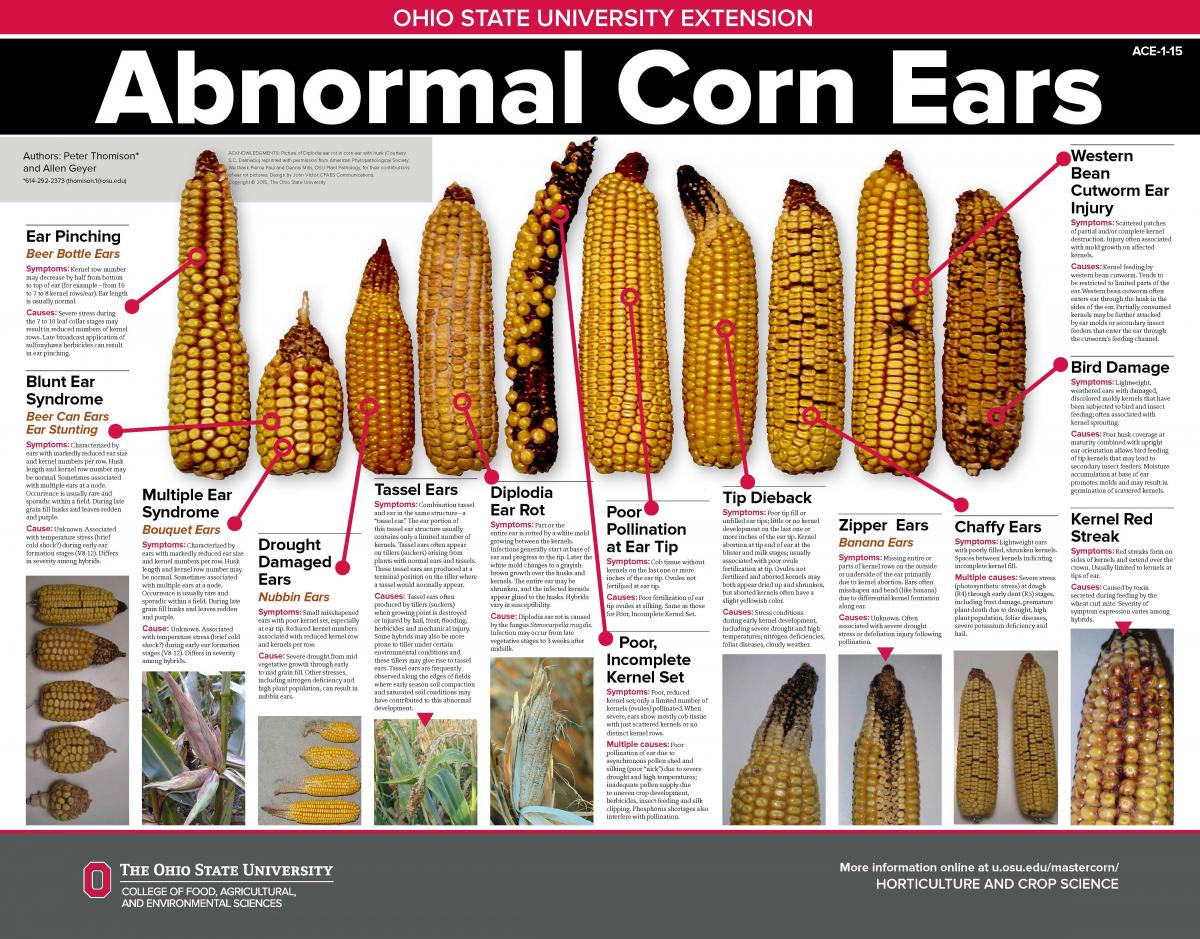Table of Contents
Sometimes your system might generate an error indicating corn troubleshooting. There can be several reasons for this problem.
PC running slow?
If you’ve planted some pretty corns and found they don’t grow tall, it could be due to a need for warmth or a lack of water. Other reasons your corn may not grow include soil compaction, poor lighting, and very cold temperatures.


Harvesting quickly requires a warm temperature for the corn, nutrient-rich soil, and regular watering. Corn is wind-pollinated, so it is important that it is properly blocked in multiple rows or multiple rows to ensure pollination.
Here is a list of potential problems associated with growing corn, with recommendations on how to fix and fix them: (read part of this article to find outon the benefits of growing corn.)
Corn Problems And Solutions:
What’s wrong with my corn plant?
When dark, moist places appear on the leaves of corn, they gradually turn yellow, and then dry out and die off, the plant has a special fungal disease. . For a plant that may already be infested, trim the damaged leaves and stems and replant them or transplant them into another, well-drained soil.

… no corn appears. The ground can be cold or damp. Plant later when the soil and a warm area are warmer; Make sure the soil is well-drained by adding seasoned compost and soil with organic factor.
PC running slow?
ASR Pro is the ultimate solution for your PC repair needs! Not only does it swiftly and safely diagnose and repair various Windows issues, but it also increases system performance, optimizes memory, improves security and fine tunes your PC for maximum reliability. So why wait? Get started today!

â € ¢ Seed offal and young plants that are eaten. The corn wireworm, or all seed corn flies, eat the seeds. A corn wireworm is a beetle larva; The Tap Beetle is really reddish brown or black up to inches in length. Wireworms are brown or yellow, leathery, up to 1.5 inches long. Corn fly is a yellowish white fly without legs, a fly larva. Treat the garden bed in the fall when you return to expose it to bird larvae. Pull the corn out of the chamber and let it steam every three seasons. To catch: use potato slices on a thorn, placing them 8-4 inches into the ground; they analyze the traps twice a week. And pluck wireworms and destructive larvae from the presentpotatoes. Seeding
… cut close to the surface of the dirt. Cutworms are gray or red larvae that hide in the ground but feed at night. Remove weeds and clear herb garden of plant debris. Place a 3″ paper clip around the stems of the seedling leaves and a 1″ clip in the soil itself.
…seedlings uprooted. Crows and chickens grow seedlings to feed directly on the seeds. Cover the seedlings with a bird block with row covers until established.
“The stems are falling. European corn moth – gray-pink caterpillars with a dark head (more below); they can penetrate the tunnel rods and damage them. Use Bacillus thuringiensis and a proper garden to control wells. Too much nitrogen can also make green stems look full and weak. Test the soil. Adjust fertilization. Avoid using fertilizers with too high a nitrogen content. Feed old trees with compost. Rods
… and warped, twisted or sagging leaves that can be unwrapped; Plants wither th. Aphids are small, soft-bodied but effective insects – green and gray in clusters – that attach to the underside of the leaves. Aphids leave behind a sticky waste called honeydew; black soot can grow moldy on honeydew. Spray aphids with a special stream of water; use insecticidal soap; Lightweight aluminum mulch disorients aphids. Aphid predators deliver lacewings, ladybirds, and praying mantises. Small
… drill holes in the leaves. The callus flea can pierce leaves with small pockets and transmit Stuart’s wilting, a bacterial disease that slows down the vascular system of a plant or clogs it with mucus; wilting is infected, plants slow down and die. Collect the beetles; Cultivating an entire garden disrupts the never-ending cycle of insect life. Sprinkle with feverfew or rotenone.
… Large gaps in the leaves. Scoops, cornworms, some beetles and grasshoppers eat not to mention corn husks. Pick up the bugs with your hands and kill them or soak them in soapy water. Loss of small silver sheetsfrom the fabric does not shrink. Plant early corn varieties to avoid the scoop. Use commercial flower bait traps. Grow them only in the fall to expose the larvae.
… holes in the leaves are circling nearby. European cutter for ingrown toenails; The larvae are light pink-brown caterpillars with dark brown heads and dark spots on the body; the adult butterfly is light dark brown with a wingspan of inches. The larvae attach to feed the corn whiskers and then burrow into the stalks. They also feed on panicle grains. Destroy hand picks and larvae. Apply Bacillus thuringiensis. Remove and destroy all infested stems at the end of the season.
Why are my corn stalks so short?
Corn triggers that are shorter than normal may be associated with timing of planting and nausea during stem elongation. Strong solar divergence is thought to result in photodegradation of auxin, resulting in less elongation of internodes, which also results in shorter plants.
â € ¢ The ends of the blades roll inward. Soil moisture may be unnecessary. Corn grows rapidly after ear formation and begins to ripen; this standard humidity is needed. Pour corn deeply for up to 3 hours. When the soil dries out to a depth of several centimeters. Place 2 to 3 inches of organic mulch on a tray to retain moisture.
… the leaves are variegated, as well as with yellow andgreen streaks; Yellow leaves with marginal stripes; growth is slowed down or suppressed. There is no cure for mosaic viruses and corn dwarf viruses. Whether the program is spread by bugs. Plant varieties resistant to mosaic virus. Destroy infected plants and keep out weeds and herbs that aphids live in. Do not treat plants after ingestion.
… Yellow stripes on the leaves. Stewart’s wilting is certainly a bacterial disease that usually causes a blockage of the vascular system of the plant with damaged mucus; Plants turn yellow, wither, slow down and die. Fight against spreading fleas. Collect the beetles; cultivate insect-disturbing gardens. Sprinkle with feverfew or rotenone.
Why did my corn fail?
The most common causes are: Poor irrigation. One of the reasons corn plants do not produce cobs is due to irrigation. Corn has shallow roots and is therefore prone to scarcity, most commonly associated with water. Drought stress is usually indicated only by the curl of the leaves, as well as a change in the overall shade of the leaves.
… the leaves have purple edges from the leaves to the underside of the plant; The plant may wither. Phosphorus deficiency. Take a dirt test; Add bone meal up to 3 lb. per 100 square feet approximately on top of the base bedding. Use a commercially available fertilizer with a high phosphorus content of 5-10-5.
• Reddish brown vesicles usually petioled; and the leaves may turn yellow. Rust is caused by a good rust-colored fungus; The spores grow on the sow. Rust prefers hot and humid weather. Rust resistant plant varieties. Avoid overhead watering. Prune even infected leaves.
Improve the speed of your computer today by downloading this software - it will fix your PC problems.Tipps Zur Fehlerbehebung Bei Mais
옥수수 문제 해결 팁
Consejos Para Solucionar Problemas De Maíz
Suggerimenti Per La Risoluzione Dei Problemi Relativi Al Mais
Conseils De Dépannage Pour Le Maïs
Советы по устранению неполадок с кукурузой
Wskazówki Dotyczące Rozwiązywania Problemów Z Kukurydzą
Dicas De Solução De Problemas Para Milho
Tips Voor Het Oplossen Van Problemen Met Maïs
Felsökningstips För Majs




